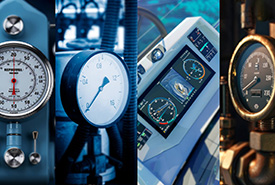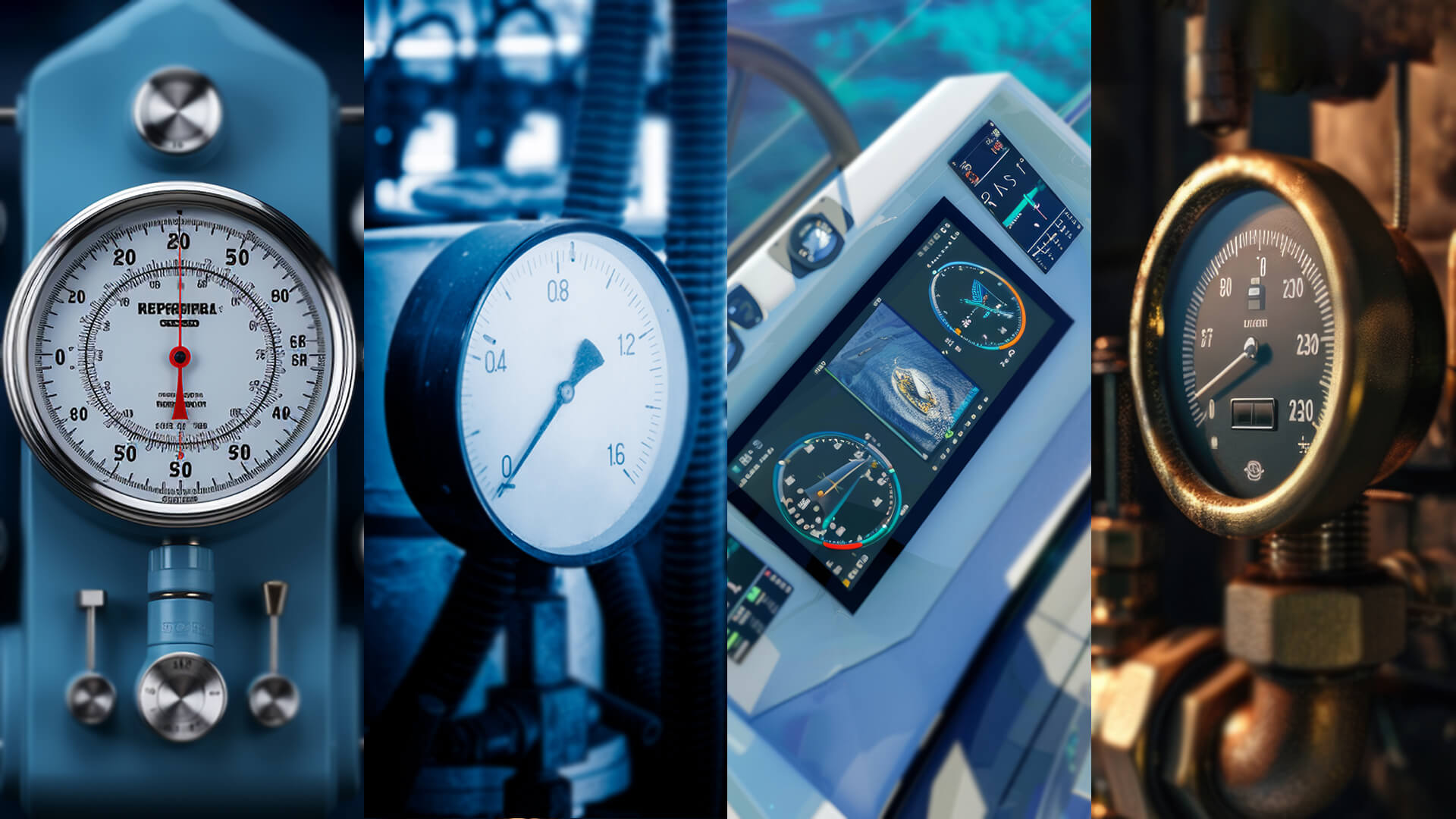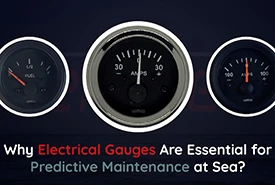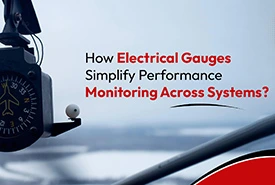- Free shipping for NZ Customers. All items are available in NZ warehouse
- +64 (0) 212576146
- [email protected]
How to Choose the Right Electrical Gauges for Your Automotive Needs?

How to Choose the Right Replacement Gauges for Your Equipment?
September 25, 2024
How Electronic Gauges Improve Accuracy in Industrial Settings?
October 1, 2024Choosing the right electrical gauges for your vehicle isn’t just about picking the first one you see. It’s about finding gauges that provide accurate, real-time information about your car’s performance.
Electrical gauges help you keep track of vital functions like oil pressure, temperature, and voltage, ensuring your vehicle runs safely and efficiently.
But with so many options out there, how do you make the right choice?
In this article, we’ll guide you through everything you need to know to choose the right electrical gauges for your automotive needs.
Types of Electrical Gauges
Choosing the right electrical gauge depends on what you need to monitor in your vehicle. Here are some of the most common types of electrical gauges and what they do:
Voltage Gauges
A voltage gauge monitors your vehicle’s electrical system, showing the battery voltage level and alternator output. This gauge helps you keep an eye on your battery’s health and ensures that your car’s electrical system is functioning properly.
Why Choose It?Voltage gauges are essential for keeping tabs on your battery and alternator, helping you avoid unexpected power failures.
- Ideal For: Any vehicle, especially those with high electrical loads or added accessories.
Temperature Gauges
Temperature gauges measure the heat of different systems in your car, such as the engine coolant or oil. They provide critical information about how hard your engine is working and whether it’s at risk of overheating.
Why Choose It?Keeping an eye on temperature helps you avoid overheating and potential engine damage.
- Ideal For: High-performance vehicles, towing, or driving in hot climates.
Oil Pressure Gauges
An oil pressure gauge monitors the oil pressure in your engine, ensuring it has the right amount of lubrication to run smoothly. Low oil pressure can be a warning sign of engine wear or oil leaks.
Why Choose It?It alerts you to low oil pressure, which can prevent severe engine damage if addressed promptly.
- Ideal For: Older vehicles, high-performance cars, or vehicles used in heavy-duty applications.
Fuel Gauges
Fuel gauges tell you how much fuel is left in your tank. While it’s a basic gauge, it’s crucial for planning trips and avoiding running out of fuel unexpectedly.
Why Choose It?A clear and accurate fuel gauge helps you plan refuelling stops and manage fuel consumption.
- Ideal For: All vehicles, especially those used for long-distance travel.
Tachometers
A tachometer measures the engine’s RPM (revolutions per minute). It helps you understand how hard your engine is working and when to shift gears for optimal performance.
Why Choose It?A tachometer provides essential feedback for manual transmissions and performance driving.
- Ideal For: Manual transmission vehicles and high-performance driving.
Key Considerations When Choosing Electrical Gauges
Now that you know the types of electrical gauges, here’s what you need to consider when choosing the right ones for your vehicle:
Compatibility
Ensure that the gauge is compatible with your vehicle’s make and model. Check the gauge’s specifications, including voltage, size, and mounting options, to ensure it fits your car and integrates smoothly with existing systems.
Accuracy and Quality
Accuracy is critical when it comes to monitoring your vehicle’s performance. Look for gauges from reputable brands known for quality and precision. Cheaper, low-quality gauges can provide incorrect readings, which can lead to bigger problems down the line.
Ease of Installation
Some electrical gauges are plug-and-play, while others require more complex wiring. Consider your comfort level with installation and whether you need professional help. Digital gauges often come with detailed installation guides, but if in doubt, seek expert assistance to ensure proper setup.
Durability
Your vehicle’s gauges are exposed to vibrations, heat, and sometimes moisture, so durability matters. Choose gauges that are built to withstand the conditions of your specific driving environment. For example, if you drive in hot or wet conditions, select gauges with water-resistant and heat-tolerant features.
Readability
The whole point of having a gauge is to read it easily and quickly. Choose gauges with clear displays, whether it’s a bright digital readout or a high-contrast analogue dial. This is especially important for driving at night or in challenging conditions.
Features and Customisation
Some electrical gauges offer additional features like alarms, colour customisation, or data logging. Consider what features are useful for your driving style and needs. For instance, an alarm that sounds when oil pressure drops can provide an extra layer of protection.
Maintaining Your Electrical Gauges for Long-Term Performance
Maintenance is just as important as proper installation when it comes to electrical gauges. Regular upkeep ensures that your gauges continue to provide accurate information and helps prevent unexpected failures.
1. Clean the Gauges RegularlyDust, dirt, and grime can accumulate on the gauge faces and connectors, affecting their performance. Clean the gauge displays with a soft cloth and avoid using harsh chemicals that might damage the screens or sensors. For digital gauges, ensure that vents or sensor openings are clear of debris.
2. Inspect for Wear and TearRegularly inspect your gauges and wiring for any signs of wear, such as fading displays, cracked casings, or loose connections. Early detection of wear allows you to address small issues before they become major problems.
3. Recalibrate When NecessaryEven the best gauges can drift over time, especially in vehicles that experience frequent vibrations or temperature changes. Recalibrate your gauges periodically according to the manufacturer’s recommendations, or whenever you notice readings that seem inconsistent.
4. Check Electrical ConnectionsLoose or corroded connections are a common cause of gauge malfunctions. Periodically check the wiring and terminals to ensure everything is secure and in good condition. Clean any signs of corrosion with appropriate contact cleaners and replace any damaged connectors.
5. Keep Spare Parts HandyHaving spare bulbs, connectors, or even backup gauges can save you time if something goes wrong. Keeping a small kit of essential spare parts in your vehicle ensures that you’re always prepared for quick repairs.
Common Mistakes to Avoid When Replacing Electrical Gauges
Even experienced car enthusiasts can make mistakes when replacing electrical gauges. Here are some common pitfalls and how to avoid them:
1. Skipping CalibrationCalibration is often overlooked, but it’s a crucial step that ensures your gauges provide accurate readings. Skipping this step can lead to incorrect data, which could cause you to make poor decisions about your vehicle’s performance.
2. Using Incompatible GaugesNot all gauges are interchangeable. Using a gauge that doesn’t match your vehicle’s specifications can lead to faulty readings or even damage to the gauge. Always verify compatibility with your car’s system before making a purchase.
3. Rushing the Installation ProcessProper installation takes time and attention to detail. Rushing through the process or ignoring the manual can result in improperly connected wires, loose fittings, or calibration errors. Take your time and follow each step carefully.
4. Neglecting Regular MaintenanceOnce installed, gauges still need ongoing care. Skipping routine maintenance like cleaning, checking connections, and recalibration can shorten the lifespan of your gauges and lead to inaccurate readings over time.
5. Ignoring Environmental FactorsConsider where and how you drive when choosing and installing gauges. Factors like temperature extremes, humidity, and exposure to vibrations can affect gauge performance. Select gauges designed to handle the conditions of your driving environment.
Our Verdict
Choosing the right electrical gauges for your automotive needs is an important step in maintaining your vehicle’s performance and safety.
By selecting gauges that fit your vehicle, ensuring proper installation, and committing to regular maintenance, you can rely on accurate data to keep your car running smoothly.
Whether you’re a weekend warrior looking to upgrade your car or a professional mechanic working on high-performance vehicles, the right gauges can make all the difference.
Take the time to choose wisely, follow best practices for installation, and keep up with maintenance to ensure your gauges provide the reliable readings you need.
Next time you’re behind the wheel, you’ll have peace of mind knowing exactly what’s happening under the hood.





